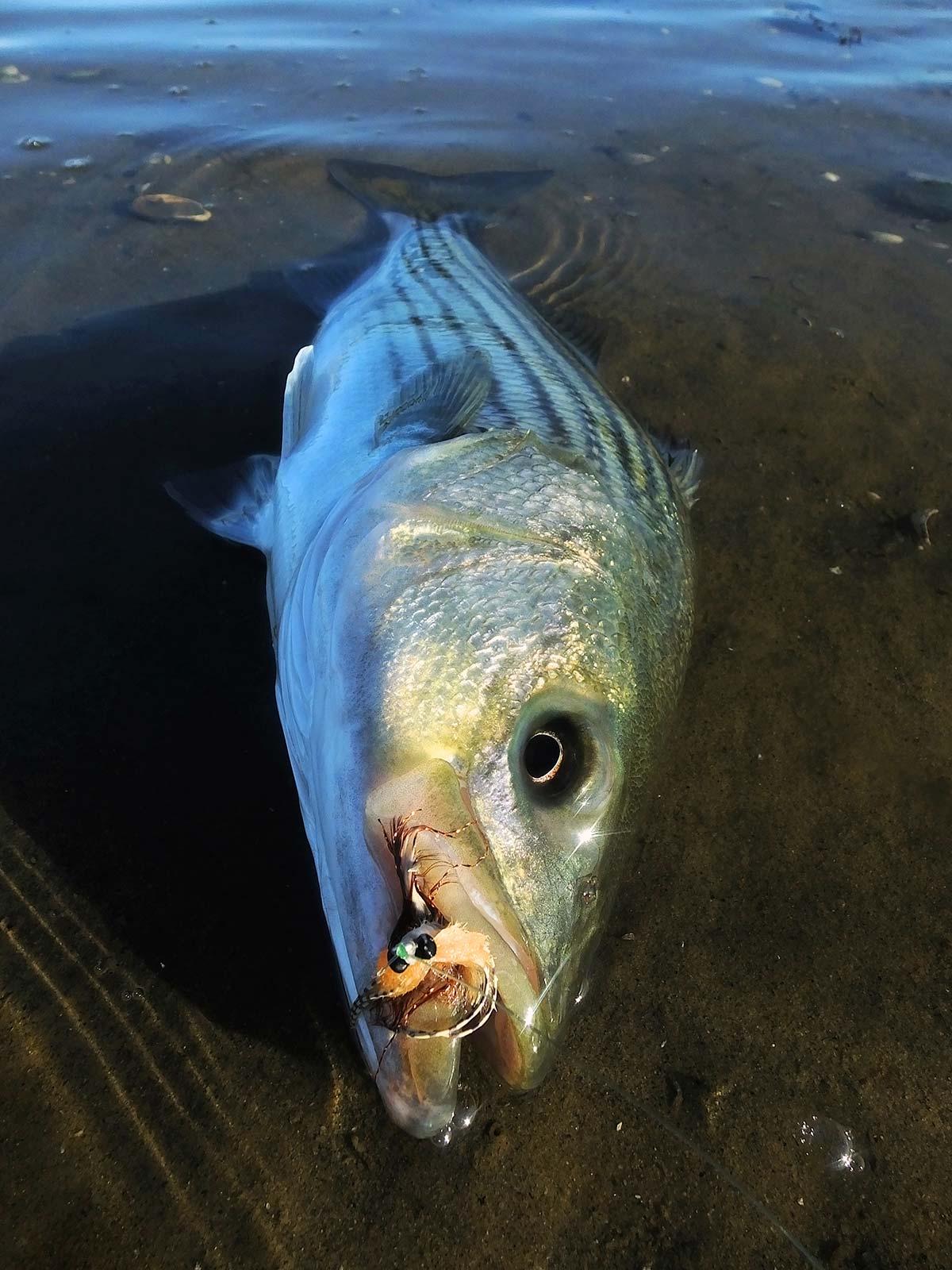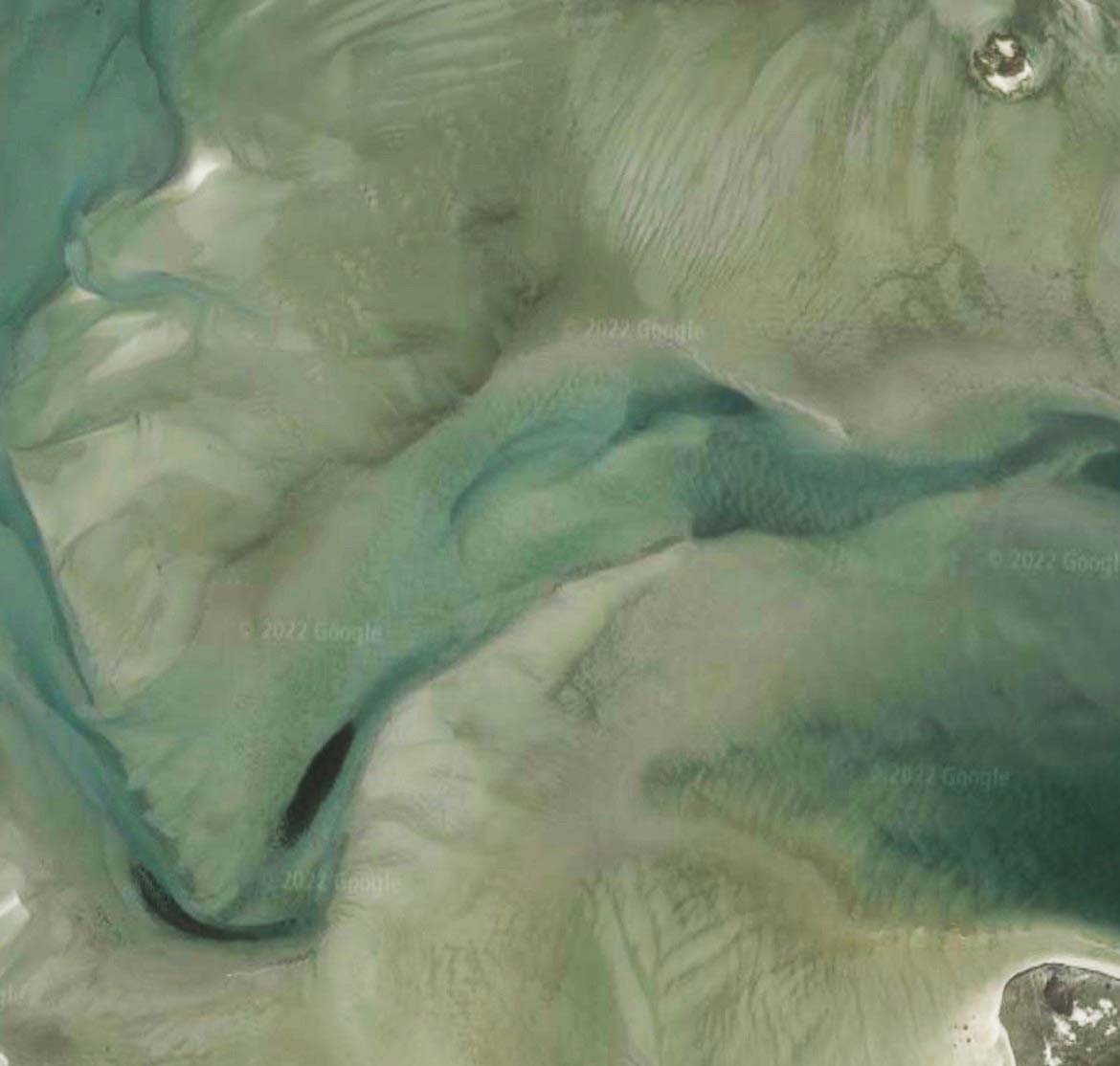
Sight fishing for summer stripers in super-skinny water.
When seeking striped bass, especially big striped bass, it’s very easy to get glued onto big open water. Prominent rocky points, inlets, large river mouths, and surf-pounded beaches all produce cows, but don’t ignore the shallow sand flats. As with anything, knowing how fish relate to these structures, how to work the tides, and what forage is present can result in great fishing and a shot at some large bass.
Flats are formed wherever sediment, sand, and gravel are being piled up by moving water running up against slow water, thereby losing strength and dropping its sediment. This can be the mouth of a river or creek, just inside or outside a salt pond, or in the lee of a prominent point or island. One of the important things to remember is that flats are not actually all that flat. They have holes, troughs, cuts, and bars that shape them and provide bass with traveling and feeding lanes.
Big fish in particular don’t like to travel over long expanses of shallow and featureless bottom. Look around the very edges of a flat, and where channels allow fish to move in and out of the shallows with ease. Large stripers will follow contour lines. It is often best to stake out where a depth contour makes a sharp turn or drops off the flat. The fish will generally be traveling in one direction, though it isn’t always clear whether they’ll drift with the tide or swim into it as both happen on different flats at different times. Generally, feeding fish will face into the current, so present accordingly until you see fish pushing in the other direction.
A particularly good structure to focus on are fan-outs, places where a constricted current in a channel or cut starts to widen. These places are like miniature river deltas, with strong current flowing over shallow water. Miniature flats within the flat, if you will. In such habitat one might see striped bass tailing like permit, something you won’t likely experience if you never fish the flats.

Flats may vary in composition. Some have oyster bars, large rocks, shell bottom, eelgrass, clean sand, cobble, or mud. The forage differs over different bottoms. Cobble, weeds, and large rock are often the domain of crabs and shrimp. Sand favors silversides and sand eels. Mud often hosts a variety of worms and crustaceans as well as small flatfishes. Eelgrass seems to have it all. Often, merely wading around the flat will give you an idea of what the bass might be feeding on.
Some flats fishing staples include small bucktails, needlefish, and soft plastics like Albie Snax, Slug-Go’s and Ron-Z’s. With fly tackle, crab imitations like Skok’s Strong Arm Merkin are often utilized, as well as baitfish imitations like Surf Candies and E-Z Sand Eels. Topwater flies such as the Crease Fly have significant utility in flats fishing when snapper blues or peanut bunker are being flushed over a fan-out on a strong tide.
Sight fishing and blind casting during the day provides a very unique experience for surfcasters, but the flats can produce well at night too. It is vitally important to be very familiar with the flat you intend to fish before you venture onto it in the dark. Know your travel routes and know your tides. Flats often require long wades to reach productive water and getting stranded can happen if you don’t pay attention; and may end in disaster. Some troughs may be relatively shallow but have powerful current at certain stages of the tide. It’s also hard to find narrow bars if you don’t really know your landmarks. Do the legwork in daylight before venturing out at night.
Once you know the lay of the land though it only takes slightly tweaking strategies to get on fish. They’ll generally hold on some of the same features, especially where heavy current exists. Fish slower presentations and larger offerings than you would in daylight.
Though the percentage of bass in the population that are going to wander into shallow flats is fairly small, it does provide a fairly simple opportunity to get good-sized bass on light tackle. The prey is often smaller, the water shallower, and the casts sometimes shorter. This makes the flats the domain of fly tackle and lighter spinning gear. Don’t expect a 50-pounder, but 20’s and 30’s are certainly possible.



